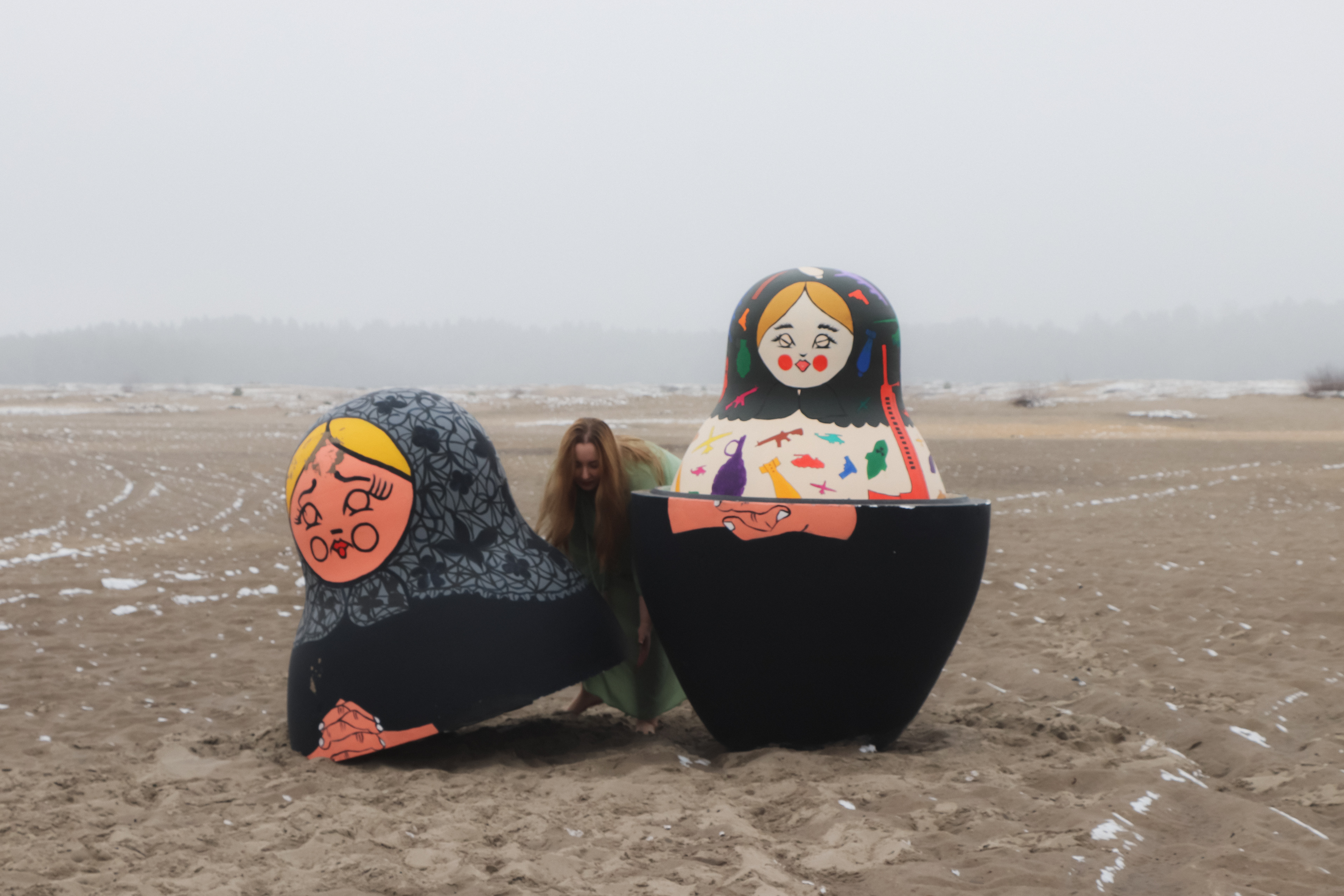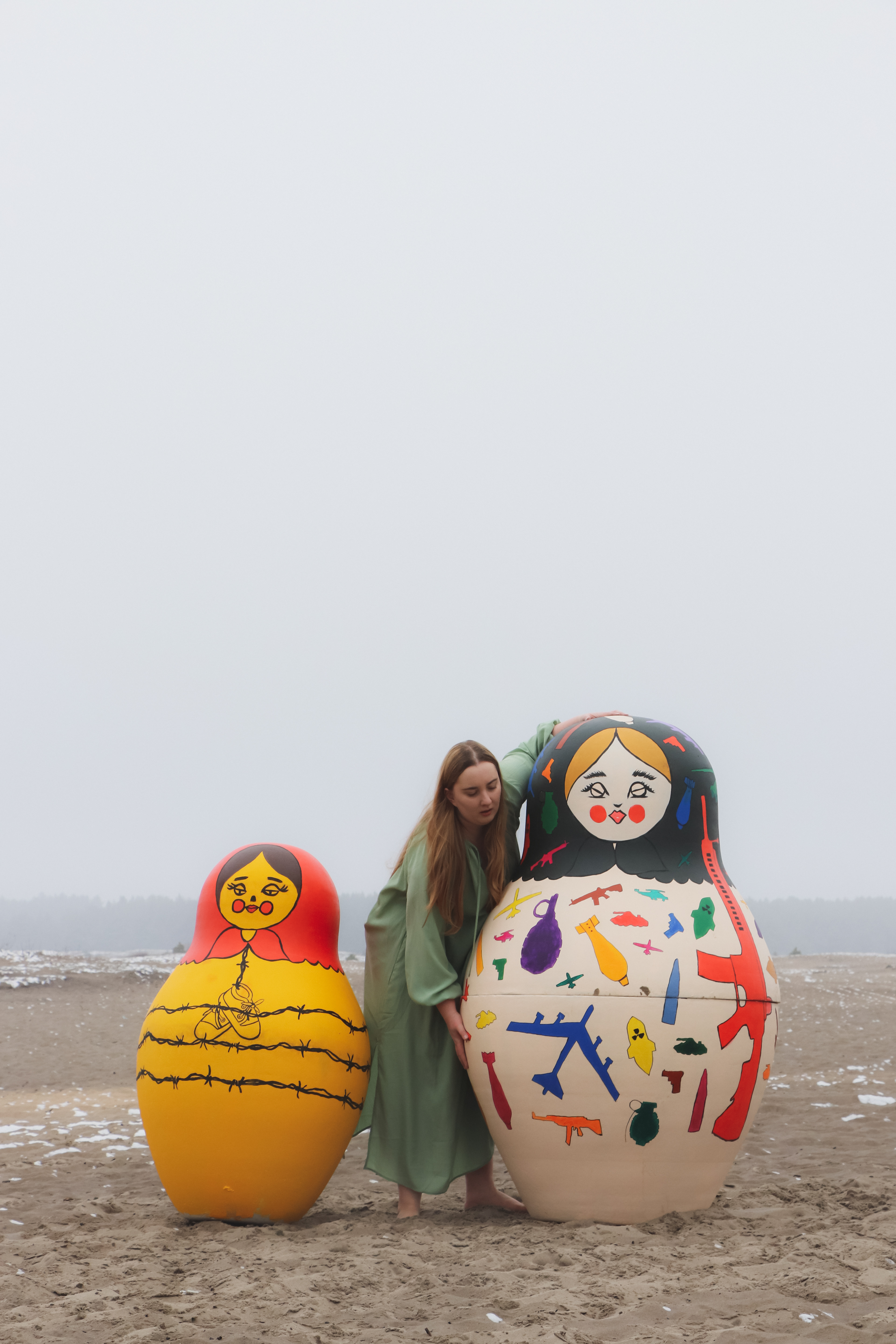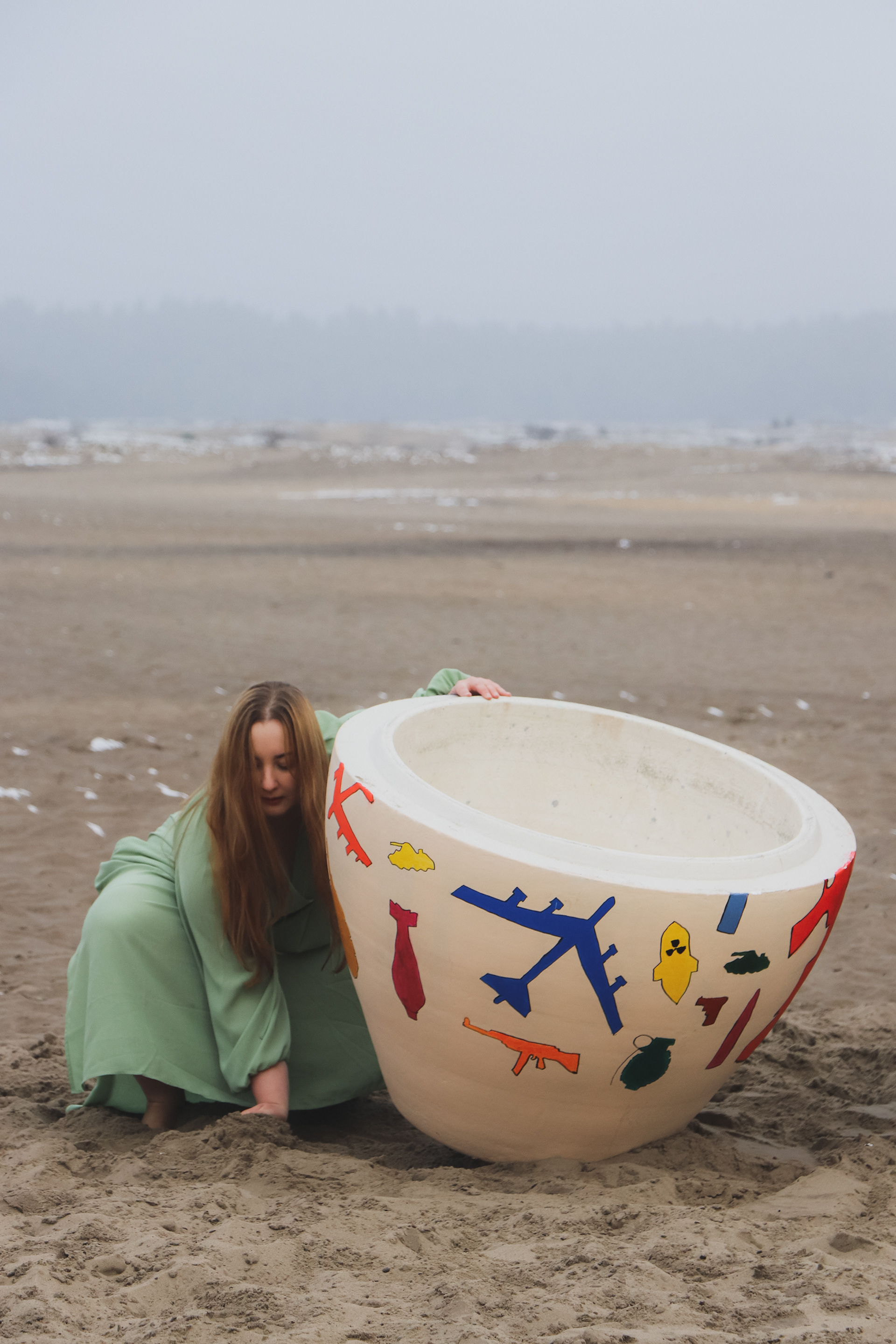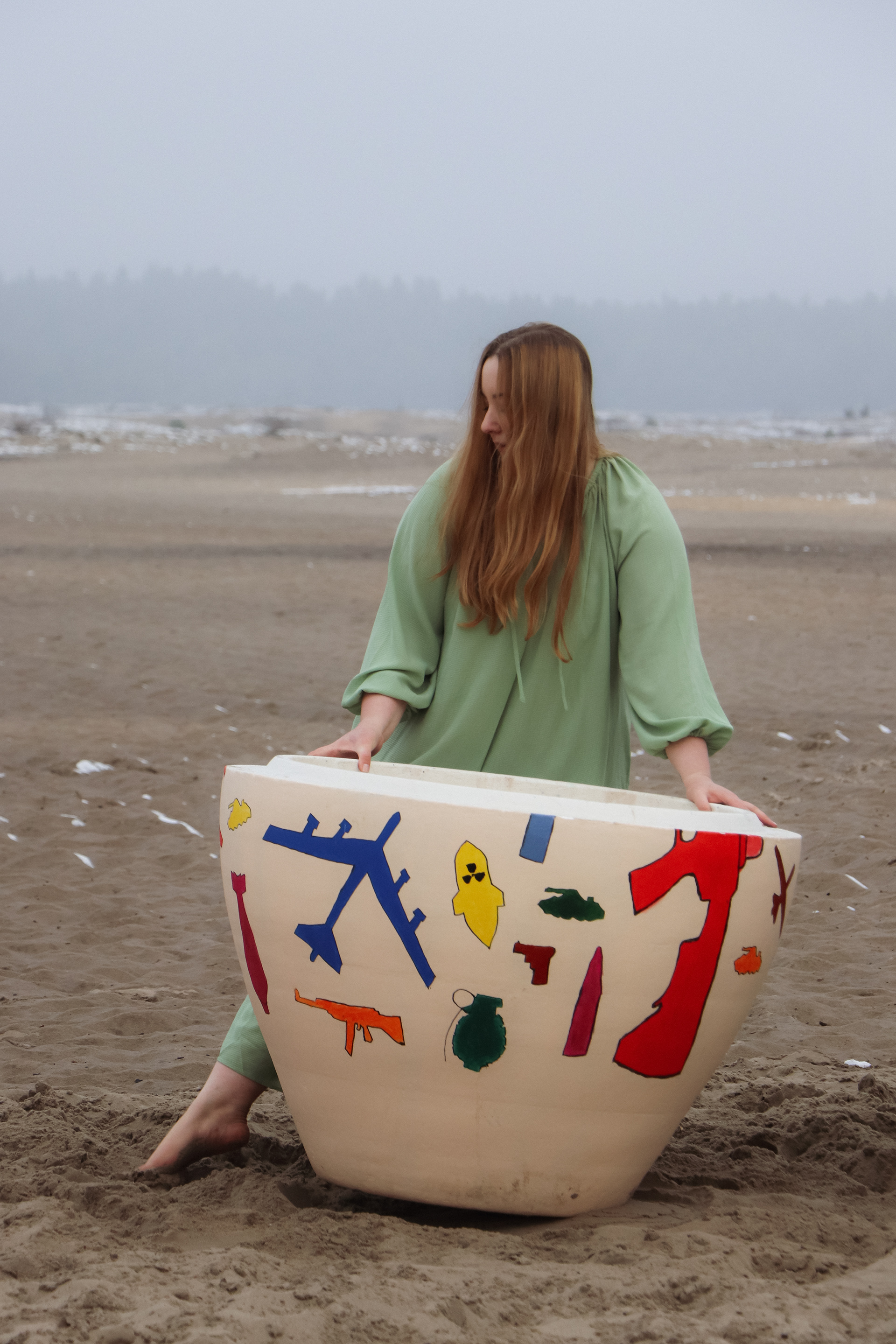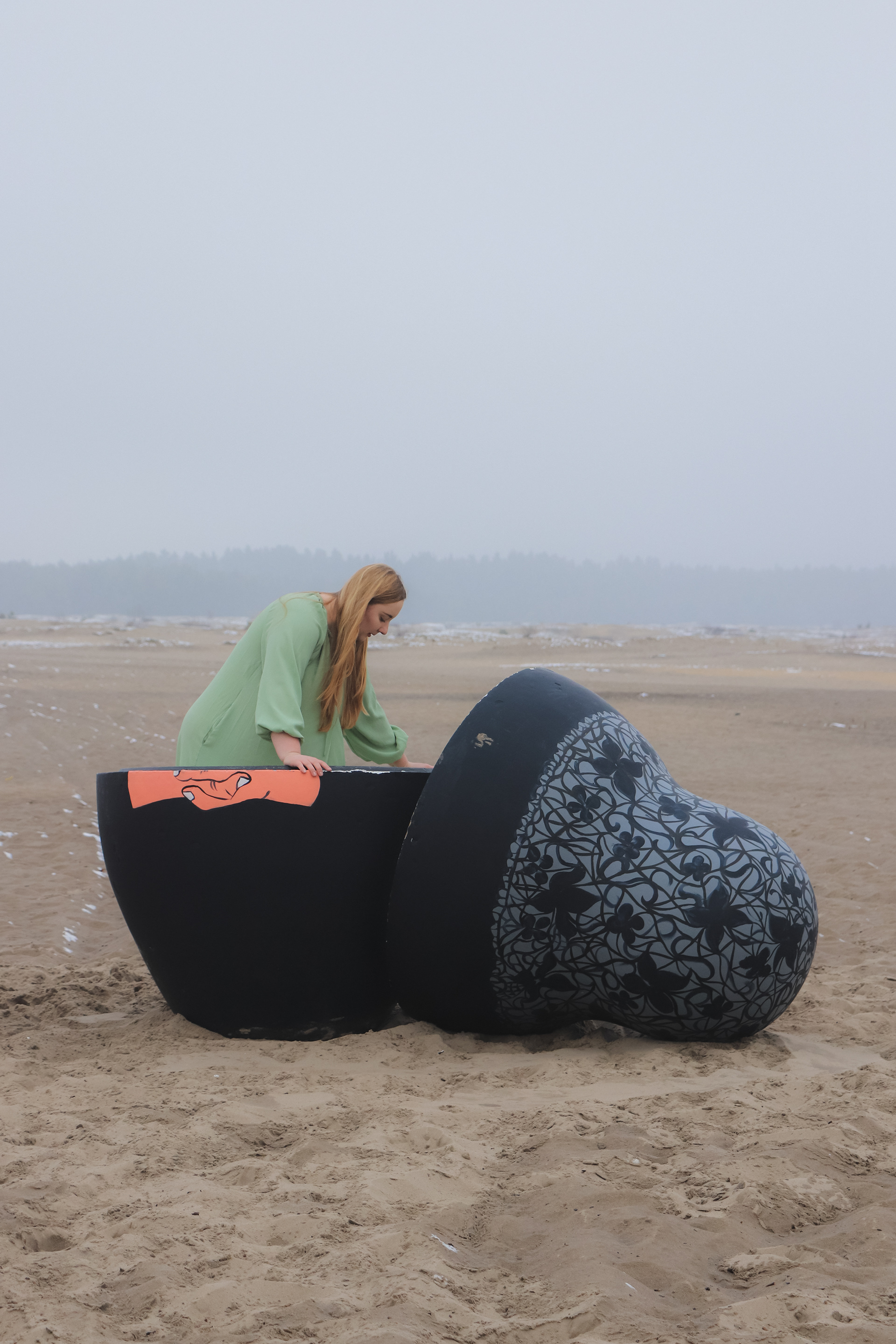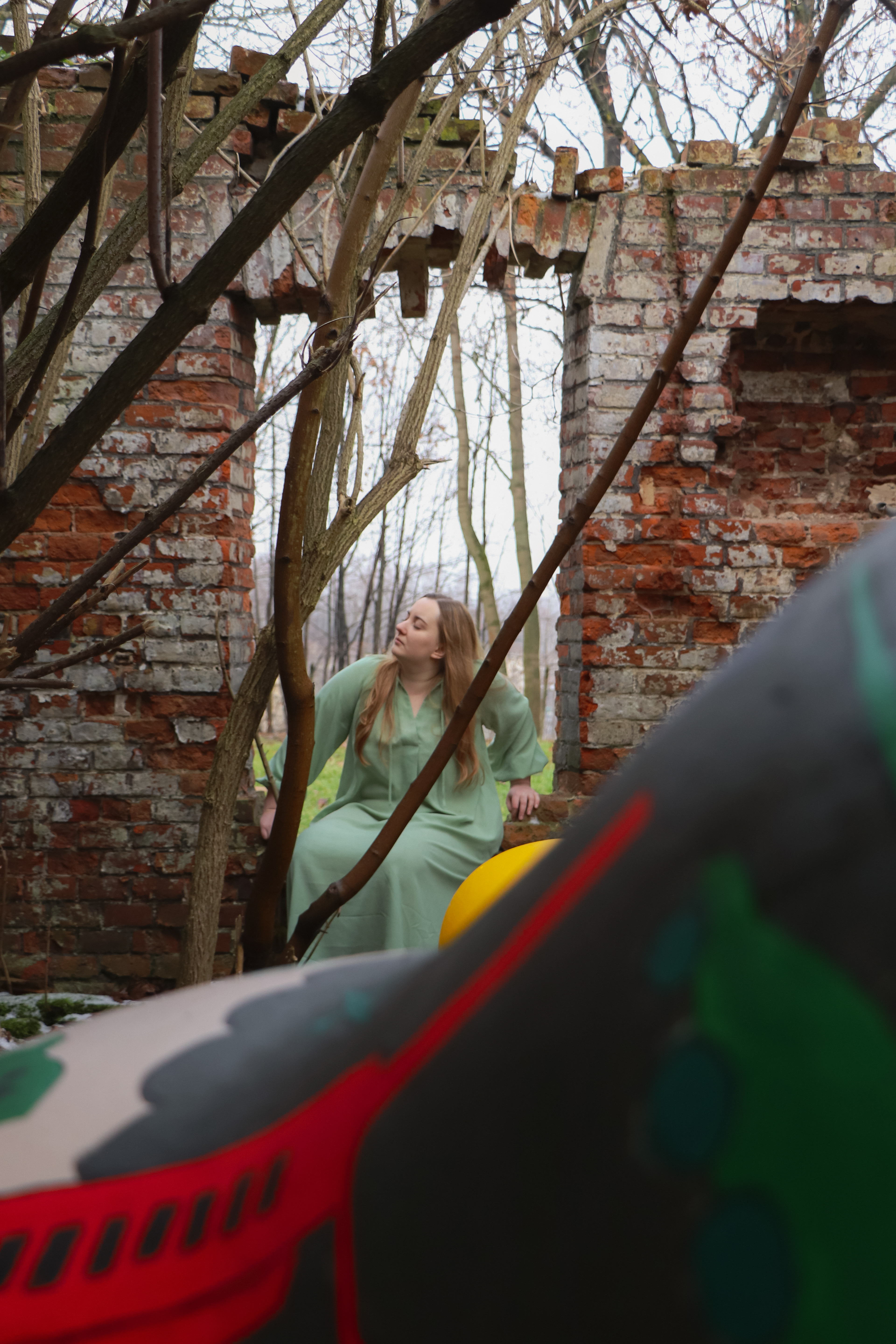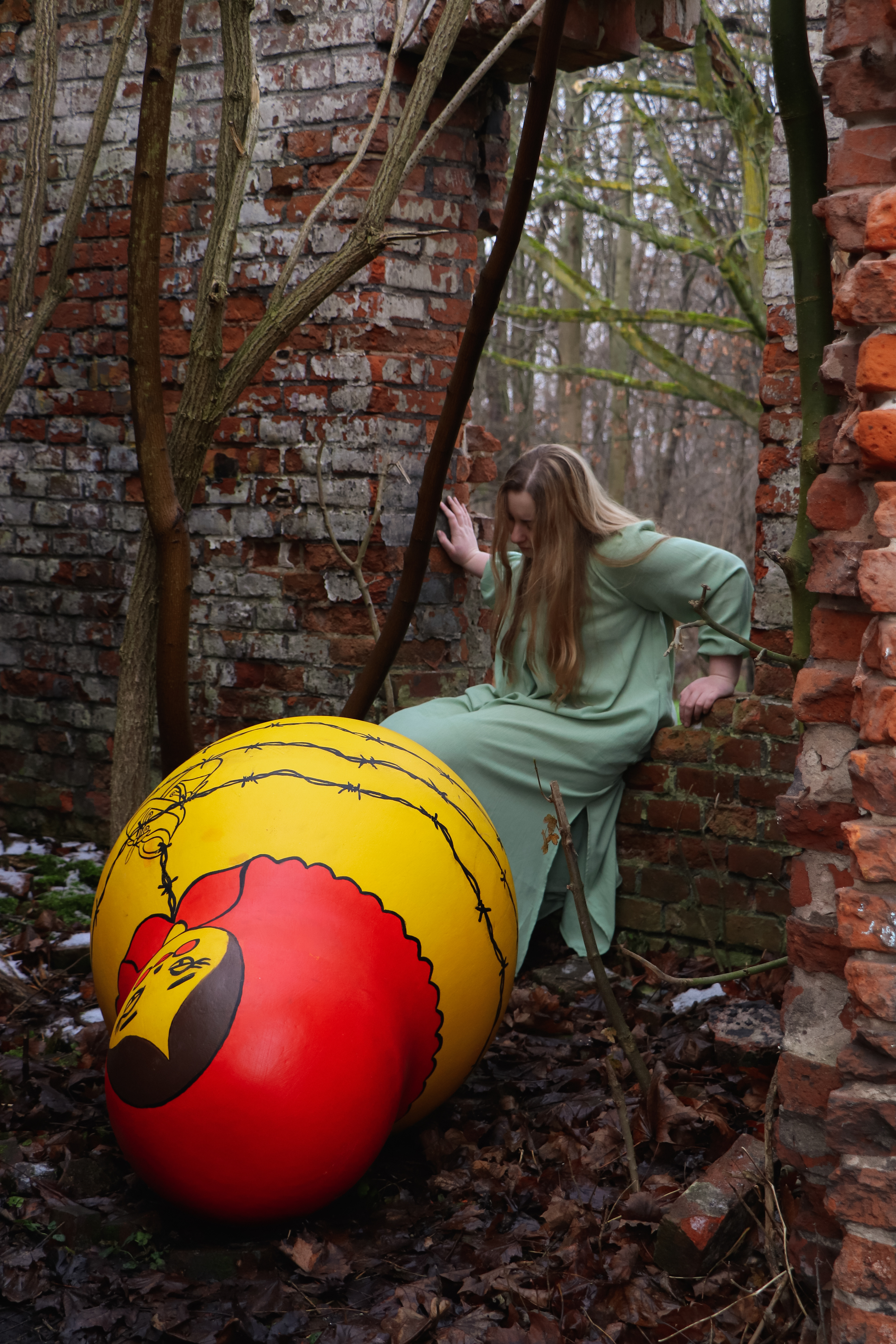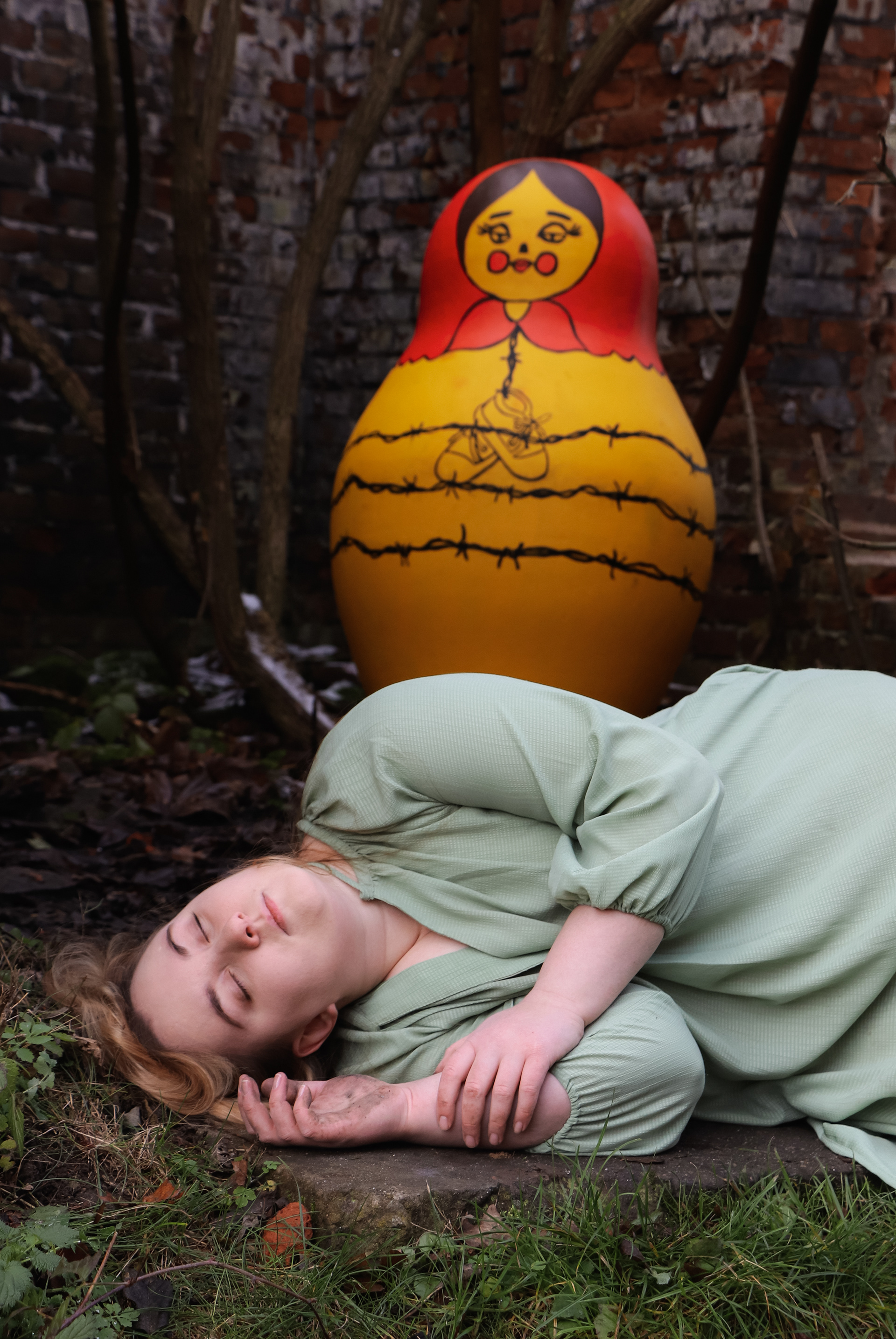"Matryona/Patriona"
Three sculptures, which make up one matryoshka, video/performance directly and indirectly refer to the current war situation in Ukraine. Matryoshka is identified with a mother or a woman, which is extremely important in the context of the current situation in the world.
An important issue in choosing this sculptural figure was/is also cultural appropriation, because mainly associated with Russia, the matryoshka has broad roots, the sources of which can be found in Japanese culture. It is also associated with Ukraine, being a decoration of most stal Is and shop windows and a frequent souvenir from trips to this country. Matryoshkas have symbols of mourning on them and war symbols inspired by Afghan war rugs from the period of the Soviet intervention in Afghanistan. The largest of them thanks to its size can be both a sarcophagus and a shelter. The smallest figure, similar in height to a child,and its polychrome refer to motherhood and the situation of women in Poland. The three sculptures presented form a woman's life cycle. The anti-war film poetically presents the subject in two planes, ruins and desert. The film is complemented by a soundtrack in the form of the song "Pust wsiegda budiet solnce". The chcice of the song is determined by the ironie presentation of the illusory promise of peace and prosperity "forever".
An important issue in choosing this sculptural figure was/is also cultural appropriation, because mainly associated with Russia, the matryoshka has broad roots, the sources of which can be found in Japanese culture. It is also associated with Ukraine, being a decoration of most stal Is and shop windows and a frequent souvenir from trips to this country. Matryoshkas have symbols of mourning on them and war symbols inspired by Afghan war rugs from the period of the Soviet intervention in Afghanistan. The largest of them thanks to its size can be both a sarcophagus and a shelter. The smallest figure, similar in height to a child,and its polychrome refer to motherhood and the situation of women in Poland. The three sculptures presented form a woman's life cycle. The anti-war film poetically presents the subject in two planes, ruins and desert. The film is complemented by a soundtrack in the form of the song "Pust wsiegda budiet solnce". The chcice of the song is determined by the ironie presentation of the illusory promise of peace and prosperity "forever".

